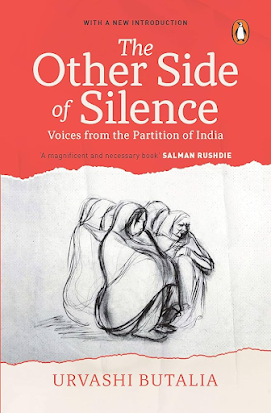Content Warning:
The following images contain sensitive content related to the violence and suffering experienced during the partition of India. These images are included to provide a raw and honest portrayal of the tragic events that unfolded during this period. Viewer discretion is strongly advised.
Hello, Readers. As we stand on the threshold of India's 78th Independence Day, a moment of profound reflection beckons us. This Year, our nation celebrates under the banner of "Viksit Bharat", a vision that aspired to transform India into a developed nation by 2047. But beyond the grand celebrations and ambitious goals lies a rich tapestry of stories that have shaped our journey to freedom stories that often remain in the shadows of history.
In this blog. I aim to peel back the layers of India's Partition and Independence, revealing the untold narratives that have been overshadowed by the larger narrative. Did you know that the partition triggered one of the largest mass migrations in human history, displacing over 14 million people, Or that the Radcliffe Line, which divided India and Pakistan, was drawn in just five weeks by a man who had never set foot in India before named Cyril Radcliffe who was the British lawyer and civil servant?
These are just glimpses of the complex and often painful realities that accompany our freedom. As we celebrate "Viksit Bharat" and envision a brighter future, It's crucial to remember the sacrifices, struggles, and resilience that have brought us here. Join me as journey beyond the celebrations and uncover the hidden stories of India's Partition and Independence.
The night of 14th and 15th August 1947, marks India's Independence, a moment of immense pride, but it's also a night shadowed by a series of tragic and complex events. Here are some of the darker, lesser-known aspects, drawn from controversial books, historical accounts & declassified documents of the Indian government.
1. Hasty Partition & Mass Violence
The hurried decision to partition India and Pakistan was made just weeks before independence. Cyril Radcliffe, who had never been to India before, was tasked with drawing the borders within a mere five weeks. His lack of knowledge and the rushed nature of the process contributed to poorly defined borders that led to massive communal violence. Approximately 10-15 million people were displaced and an estimated 1-2 million lost their lives in the ensuing chaos. The violence included massacres, arson, forced conversions, and horrific acts of sexual violence.
2. Nehru's Midnight Speech: A Nation in Turmoil
Jawaharlal Nehru's famous "Tryst with Destiny" speech, delivered just before midnight on August 14, 1947, is celebrated as a defining moment in India's history. However, while the nation's leaders celebrated in Delhi, the country was engulfed in violence, especially in Punjab and Bengal. The new borders had already ignited brutal communal riots, and the night was marked by killings, looting, and chaos, particularly in border areas.
 |
Rawalpindi Massacres, 1947
|
 |
| Direct Action Day in Kolkata, 1946 |
3.
Mounbatten's Role and Hidden Agendas
The person named Louis Mountbatten, the last viceroy of India, is often credited with overseeing a smooth transition of power. However, some controversial sources suggest that Mountbatten had his own agenda, including protecting British interests in the region and ensuring Pakistan's creation to maintain a foothold in South Asia. His insistence on advancing the date of British withdrawal from June 1948 to August 1947 is seen by some historians as a key factor in the ensuing chaos.
4. Princely States: Forced Accession
The integration of princely states into India was another dark chapter. Several princely states were reluctant to join India or Pakistan, and some like Hyderabad, Junagadh, and Kashmir, were annexed through military force or political intrigue and suppression of dissent, leading to long-term conflicts, especially in Kashmir.
5. Mass Suicides and Honour Killings
In Punjab, particularly on the night of August 14-15, there were numerous reports of mass suicides and honor killings within communities to prevent women from being abducted or raped by the opposing religious community. Families often chose to kill their own daughters and sisters rather than see them dishonored.
7. Silencing of Dissenting Voices
In the immediate aftermath of independence, there were efforts to suppress or silence voices that were critical of the partition and the violence it unleashed. Writers, journalists, and even political leaders who spoke out against the way independence was handled often faced censorship, and threats or were marginalized. This includes figures like Maulana Abdul Kalam Azad, whose concerns about the communal divide and the consequences of partition were downplayed.
These facts and stories reflect the complexity and tragedy intertwined with India's independence, often overshadowed by the more celebrated narratives of freedom and national pride. The events of August 14-15, 1947, are a poignant reminder of the costs at which so-called independence was achieved.
The Transfer of Power 1942-47 (British India Declassified Documents)
Sources: Anshul Singh











Comments
Post a Comment